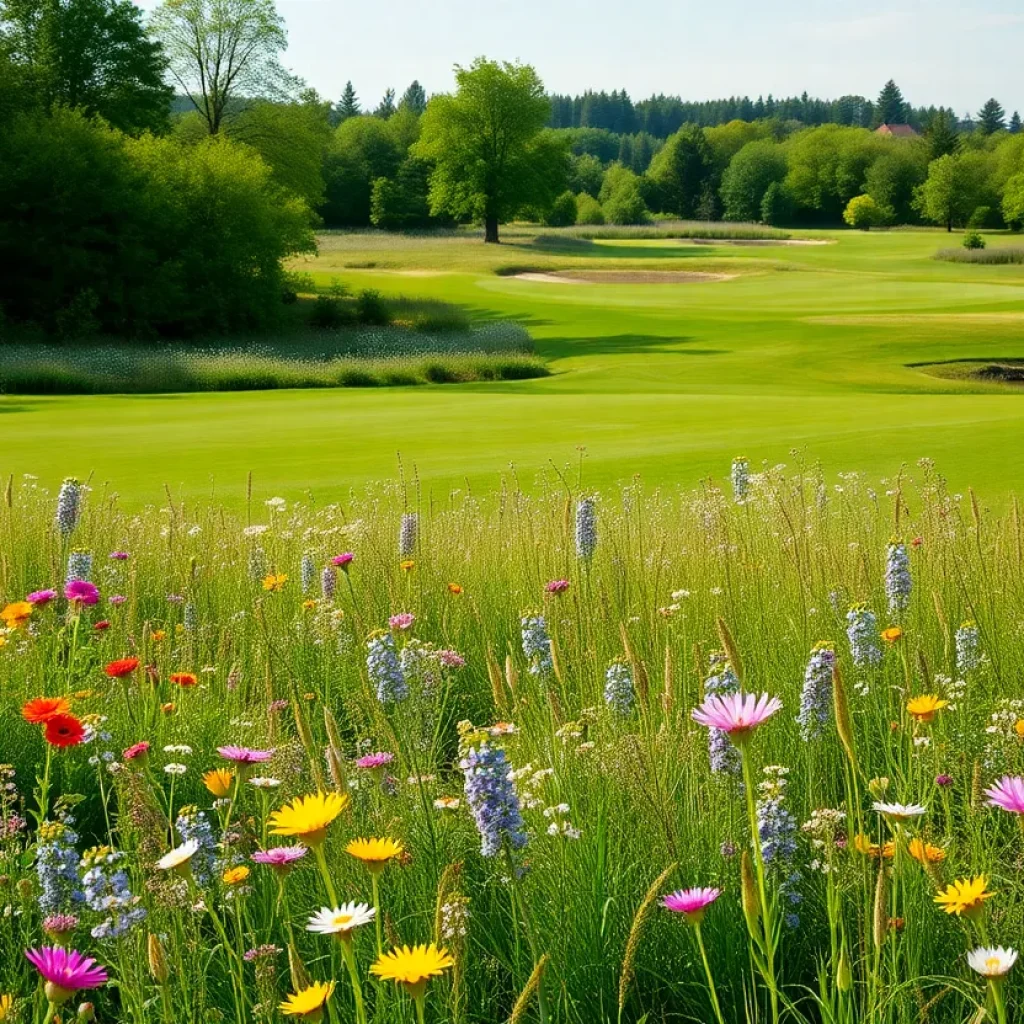News Summary
Golf courses across the globe are transforming into vibrant natural landscapes, promoting biodiversity and community engagement. One notable example is the Plock of Kyle, a 60-acre park that has flourished since its transition from a golf course to a diverse ecosystem. This movement highlights the benefits of rewilding, from restoring habitats to providing green spaces for public enjoyment. As communities advocate for ecological restoration, the trend shows promise for a greener future.
Golf Courses Turned Wild: Nature Takes Back the Greens
The once manicured greens of golf courses are getting a nature makeover, and it’s an exciting trend taking root in various pockets across the globe. Instead of carefully trimmed fairways and perfectly maintained sandtraps, we’re now welcoming lush ecosystems teeming with wildlife. This movement is not just about letting grass grow wild; it’s about enhancing biodiversity and engaging communities in the beauty of nature.
The Plock of Kyle: A Perfect Example
One fabulous example of this rewilding wave is found at the Plock of Kyle. What was formerly a golf course is now blossoming into a stunning natural parkland. Covering a generous 60 acres (that’s 24 hectares for the metric fans), the Plock showcases a variety of ecosystems, including vibrant wildflower meadows, serene ponds, rugged coastlines, and captivating peat bogs. This transformation provides a haven for all sorts of wildlife. Think of roe deer, otters, lizards, eels, and a cacophony of insects and birds all making their home in this lovely space.
A Wildlife Haven of Miniature Scotland
The Plock is essentially a microcosm of Scotland. It boasts major habitats represented in miniature form, offering both locals and visitors a chance to witness the charm of Scotland’s natural diversity without leaving their backyard. Since the golf course shuttered its doors in the mid-2000s, much of the area has been allowed to heal and flourish, culminating in its grand rewilding achievement in 2019 under community trust efforts.
Going Global: Rewilding Takes Flight
This isn’t just a local phenomenon; all around the world, similar rewilding projects have taken shape. From sunny California to the rolling hills of Pennsylvania, down to Australia and across Canada, golf courses are morphing back into their natural states. Given that there are over 16,300 golf courses in the U.S. alone, totaling approximately 8,000 square kilometers (that’s about 2 million acres), it’s exciting to see many of these large land areas being reclaimed by nature.
Benefits Beyond Biodiversity
The trend toward restoring former golf courses to natural habitats comes with a treasure trove of benefits. Not only does it help biodiversity, but it also provides public access to open, green spaces that more and more people crave. Rewilding efforts actively seek to rejuvenate ecosystems that suffered due to previous golf course maintenance practices, which often involved excessive water use and chemical fertilizers that ended up causing ecological damage.
Community Engagement and Eco-Responsibility
Activism is on the rise against golf courses due to environmental concerns, particularly surrounding biodiversity loss. Communities have been vocal about the desire to replace traditional golf courses with natural spaces. One reformative project in California—San Geronimo Golf Course—has successfully converted land back to nature, and now serves as a wildlife corridor, supporting species like the endangered coho salmon while also offering locals a place to hike, bike, and learn about nature.
New Spaces for People
While we celebrate the beauty of these evolving environments, there are challenges to navigate. Funding for maintenance and potential land-use conflicts, such as debates over whether to develop areas for housing, remain pertinent issues. However, initiatives like those at the Plock offer educational programs, mental health support, and opportunities for community members to engage in restoration work, shining a light on how these new green spaces can serve the public.
A Future Filled with Nature
Ultimately, these rewilding projects aim to foster a greater sense of connection between people and their environments. As parks blossom and spread, they create small pockets of nature that enhance the likelihood of positive interactions with the natural world. Engaging with the environment isn’t just a pleasant pastime; it’s an essential part of our communal fabric.
So the next time you hear about a golf course being transformed into a nature preserve, remember that it’s more than just a pretty picture. It’s a movement towards a greener, more biodiverse, and community-focused future that benefits everyone—and the adorable critters that call these spaces home.
Deeper Dive: News & Info About This Topic
HERE Resources
Additional Resources
- BBC Future: Golf Courses Rewilded
- Wikipedia: Rewilding
- GolfPass: Best Public Golf Courses in California 2025
- Google Search: Best Golf Courses in California
- World Atlas: Best Golf Courses in the United States
- Encyclopedia Britannica: Golf
- Golf.com: Best Golf Courses in California 2024-2025
- Google Scholar: Rewilding Golf Courses
- GolfWeek: Arnold Palmer’s California Golf Course for Sale
- Google News: Rewilding Movement
Author: STAFF HERE JACKSONVILLE WRITER
The JACKSONVILLE STAFF WRITER represents the experienced team at HEREJacksonville.com, your go-to source for actionable local news and information in Jacksonville, Duval County, and beyond. Specializing in "news you can use," we cover essential topics like product reviews for personal and business needs, local business directories, politics, real estate trends, neighborhood insights, and state news affecting the area—with deep expertise drawn from years of dedicated reporting and strong community input, including local press releases and business updates. We deliver top reporting on high-value events such as the Jacksonville Jazz Festival, Riverside Arts Market, and World of Nations Celebration. Our coverage extends to key organizations like the Jacksonville Chamber of Commerce and JAXUSA Partnership, plus leading businesses in logistics, healthcare, and entertainment that power the local economy such as CSX Corporation, Baptist Health, and VyStar Credit Union. As part of the broader HERE network, including HEREOrlando.com, HEREStPetersburg.com, HERETallahassee.com, and HERETampa.com, we provide comprehensive, credible insights into Florida's dynamic landscape.





